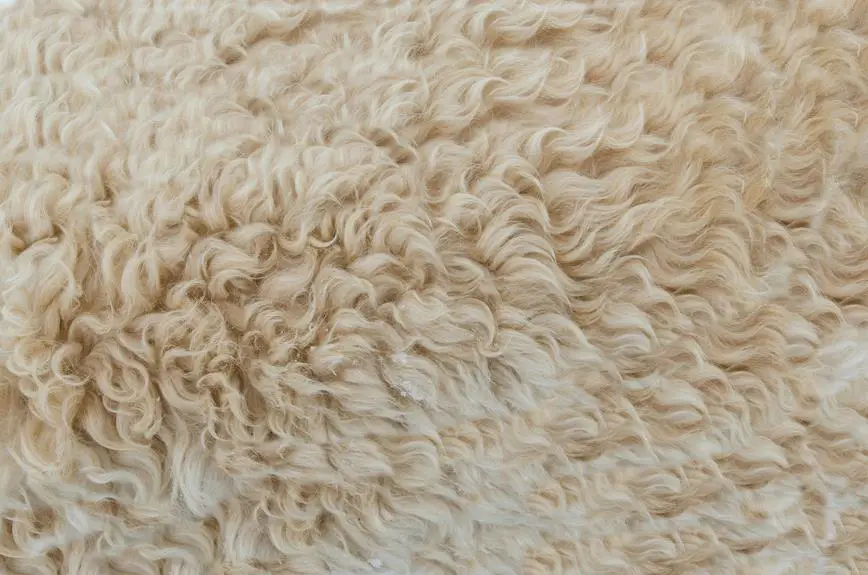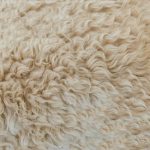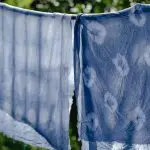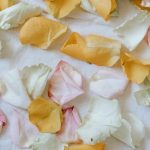When you think about how voile is made, you might picture a simple fabric creation process, but it's actually quite intricate. It all starts with selecting the right fibers, which can significantly affect the fabric's final texture and durability. After that, the fibers undergo several treatments, each crucial in developing the delicate qualities we associate with voile. You'll find that understanding the weaving methods and finishing touches reveals more than just a fabric; it unveils the artistry behind it. So, what happens next in this fascinating journey of transformation?
Table of Contents
Fiber Selection
When making voile, selecting the right fiber is crucial for achieving the desired texture and drape. You'll typically choose between cotton, silk, or synthetic fibers, each offering unique characteristics that can affect the final product.
Cotton voile is lightweight and breathable, making it perfect for summer clothing and curtains. If you want a luxurious feel, silk voile provides a soft, elegant drape, ideal for high-end garments.
On the other hand, synthetic fibers can mimic the qualities of natural fibers while providing durability and ease of care. When you consider the fiber's weight, remember that lighter fibers create a more delicate appearance, while heavier options may offer more structure.
Think about the end use of your voile; if it's for flowing dresses, a lighter fiber might suit your needs best.
Don't forget to consider color and finish as well; some fibers take dye differently, which can impact the final look. By carefully selecting your fiber, you set the stage for the rest of the voile-making process, ensuring that you achieve the aesthetic and functional qualities you desire.
Spinning Process
Now that you've selected the right fibers, it's time to explore the spinning process.
You'll want to understand the various spinning techniques and how they impact yarn quality.
Let's break down the key factors that contribute to a successful spinning process.
Fiber Selection Criteria
Choosing the right fiber for voile involves considering factors like strength, softness, and moisture-wicking properties to ensure optimal performance in the spinning process. You'll want a fiber that balances durability with a soft hand-feel, making it comfortable for wear. Cotton and rayon are popular choices, as they offer a good mix of these attributes.
When selecting fibers, think about the end use of the voile. If you're producing fabric for summer garments, moisture-wicking properties become crucial. Look for fibers that can efficiently pull moisture away from the skin, keeping the wearer cool and dry.
Another aspect to consider is the fiber's ability to accept dyes and finish treatments. You want fibers that can hold color well and maintain their vibrancy after multiple washes.
Don't overlook the environmental impact of your fiber choice, either. Sustainable sources like organic cotton can be a great option if you're aiming for eco-friendly production.
Ultimately, the fibers you select will directly influence the quality and performance of the final voile fabric, so take your time to choose wisely.
Spinning Techniques Overview
In the spinning process, fibers are transformed into yarn through a series of techniques that ensure strength and consistency. You'll find that each step is crucial to creating high-quality yarn for voile production.
Here's a quick overview of the main spinning techniques you should know:
- Carding: This technique opens and aligns the fibers, making them easier to spin. It's like giving your fibers a gentle combing to prepare them for the next step.
- Drafting: During drafting, you'll pull the fiber sliver to create an even thickness. This step is essential for achieving the right yarn weight and texture.
- Spinning: The actual spinning process twists the fibers together, forming the yarn. You can feel the transformation happen as the fibers bond and strengthen.
- Twisting: Finally, twisting adds additional strength and coarseness to the yarn. It's the finishing touch that ensures your yarn can withstand the test of time.
Yarn Quality Assessment
Assessing yarn quality during the spinning process is vital to ensuring that the final voile product meets industry standards and customer expectations. You'll want to focus on several key aspects during this phase.
First, check the yarn's uniformity. Consistent thickness and texture are crucial for a smooth weaving process, so look for any irregularities as they can lead to defects in the finished fabric.
Next, evaluate the strength of the yarn. You'll need to perform tensile tests to measure how much force the yarn can withstand before breaking. Stronger yarn not only enhances durability but also contributes to the overall quality of the voile.
Another important factor is the twist level. The amount of twist affects the yarn's stability and appearance. Too much twist can make the yarn difficult to handle, while too little can lead to fraying.
Lastly, always consider the fiber content. Whether you're working with cotton, polyester, or a blend, understanding the properties of the fibers will help you assess the yarn's suitability for voile production.
Dyeing Techniques
When it comes to dyeing voile, various techniques can bring vivid colors and unique patterns to life. You have several options to explore, each offering its own charm and flair. Whether you're after a bold statement or a soft pastel, the right dyeing method can transform your voile completely.
Here are four popular dyeing techniques you might consider:
- Tie-Dye: This playful method allows you to create mesmerizing swirls and patterns, perfect for bohemian styles.
- Batik: Using wax to resist dye, batik creates intricate designs that tell a story, adding a cultural touch to your fabric.
- Dip Dyeing: This technique gives a beautiful gradient effect, allowing for a smooth transition between colors that can enhance any outfit.
- Screen Printing: With this method, you can apply detailed designs and images directly onto the voile, making it ideal for custom creations.
Each of these techniques not only adds color but also personalizes your voile, making it a reflection of your style and creativity.
Weaving Methods
Voile is crafted using several weaving methods that impact its texture and drape, allowing you to choose the perfect finish for your project. The most common techniques include plain weave, twill weave, and satin weave, each offering distinct characteristics.
Here's a quick overview of these weaving methods:
| Weaving Method | Texture | Drape |
|---|---|---|
| Plain Weave | Crisp and firm | Moderate |
| Twill Weave | Diagonal lines | Soft and flowing |
| Satin Weave | Smooth and shiny | Luxurious and fluid |
When you opt for plain weave, you get a strong fabric that's great for structured garments. If you prefer a softer feel, consider twill weave; it creates a subtle pattern that enhances drape. Satin weave, on the other hand, is perfect for elegant projects, adding a touch of luxury.
Finishing Touches
To achieve the desired look and feel of voile, several finishing touches can enhance its overall quality and appearance. These steps not only elevate the fabric but also ensure it meets your expectations for style and durability. Here's what you might consider:
- Softening Treatments: Applying softeners makes the fabric feel luxurious against the skin, enhancing comfort for everyday wear.
- Dyeing Techniques: Using high-quality dyes can bring out vibrant colors and patterns, ensuring your voile stands out and reflects your personal style.
- Finishing Edges: Neatly finishing the edges prevents fraying and gives a polished look, making your voile more visually appealing and functional.
- Wrinkle Resistance: Incorporating treatments that reduce wrinkles means your voile will maintain its sleek appearance, making it perfect for both casual and formal settings.
Quality Control
When you're working with voile, ensuring quality is key.
You need to conduct tests for fabric durability and perform color consistency checks to maintain high standards.
These steps help guarantee that the final product meets your expectations and lasts through use.
Testing Fabric Durability
Testing fabric durability is essential to ensure that voile meets the necessary quality standards for both everyday use and long-lasting performance. You want to know that the fabric you choose can withstand the test of time and wear. To achieve this, manufacturers employ several rigorous testing methods, allowing you to feel confident in your purchase.
Here are four key aspects of fabric durability testing that you'll appreciate:
- Tensile Strength: This test measures how much force the fabric can withstand before tearing, ensuring it holds up during use.
- Abrasion Resistance: Fabrics are rubbed against a rough surface to simulate wear and tear, helping you gauge how quickly the voile will show signs of damage.
- Seam Strength: Testing the seams ensures they can withstand stress without unraveling, which is crucial for your garments and home textiles.
- Colorfastness: While not directly related to durability, testing how well the colors hold up under various conditions ensures your fabric remains vibrant over time.
Color Consistency Checks
Color consistency checks are crucial in quality control to ensure that every batch of voile meets the desired aesthetic standards. You want to maintain a uniform look across different rolls, which helps in satisfying customer expectations and avoiding any discrepancies in your products.
To achieve this, manufacturers typically perform color assessments at various stages of production. They compare samples from each batch against a color standard. This process helps identify any variations early on, allowing for adjustments before the fabric reaches the market.
Here's a simple breakdown of the color consistency checks:
| Step | Description | Outcome |
|---|---|---|
| Initial Sample Test | Compare initial samples to color standards | Identify discrepancies |
| Mid-Production Test | Monitor color during production | Ensure consistency |
| Final Verification | Check finished rolls against standards | Confirm quality assurance |
Frequently Asked Questions
What Types of Clothing Are Best Suited for Voile Fabric?
Voile fabric's lightweight and breathable qualities make it perfect for summer dresses, blouses, and lightweight scarves. You'll love how it flows and drapes, adding elegance and comfort to your warm-weather wardrobe choices.
How Does Voile Compare to Other Lightweight Fabrics?
When you compare voile to other lightweight fabrics, you'll find it's softer and more breathable than many alternatives. Its delicate texture drapes beautifully, making it ideal for flowing garments, unlike stiffer options that lack movement.
Can Voile Be Used for Home Décor Items?
Absolutely, you can use voile for home décor items! Its lightness and elegance make it perfect for curtains, cushions, and table overlays. You'll love how it adds a soft, airy touch to your space.
Is Voile Suitable for All Seasons?
Voile's lightweight and breathable nature makes it suitable for all seasons. In summer, it keeps you cool, while in winter, you can layer it for warmth. You'll love its versatility throughout the year!
How Should Voile Fabric Be Cared for and Washed?
To care for voile fabric, hand wash it in cold water with mild detergent. Avoid wringing or twisting. Hang it to dry, and if needed, iron on low heat to maintain its delicate texture.
- How Durable Is Gore-Tex Material Against Abrasion? - July 2, 2025
- Texapore vs. Gore-Tex: How Do They Compare? - July 2, 2025
- Does Old Gore-Tex Still Work Effectively? - July 2, 2025







